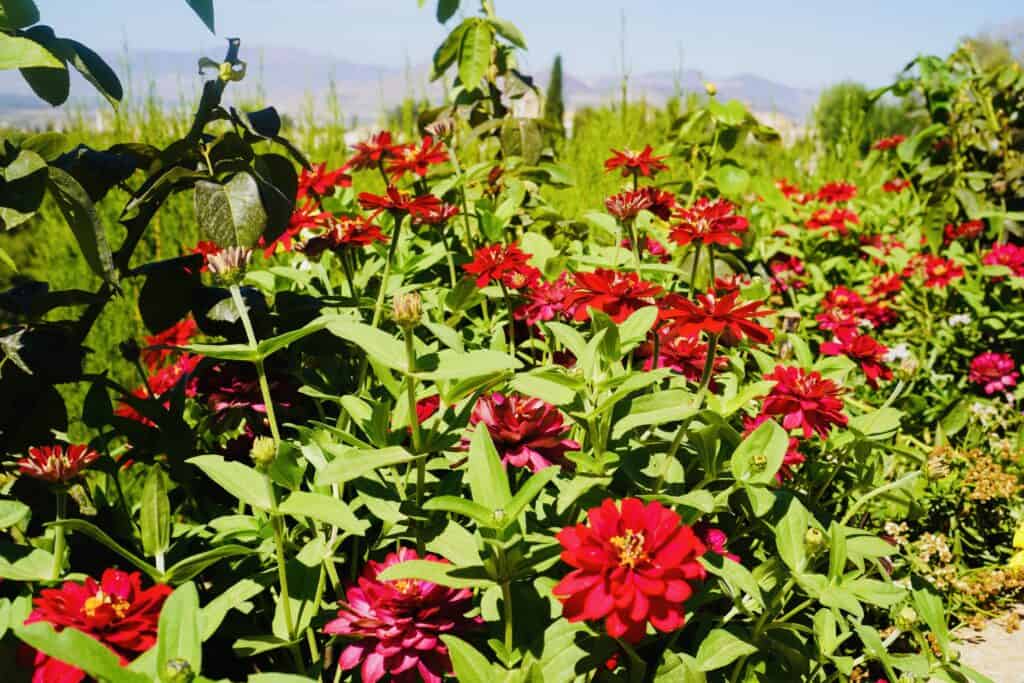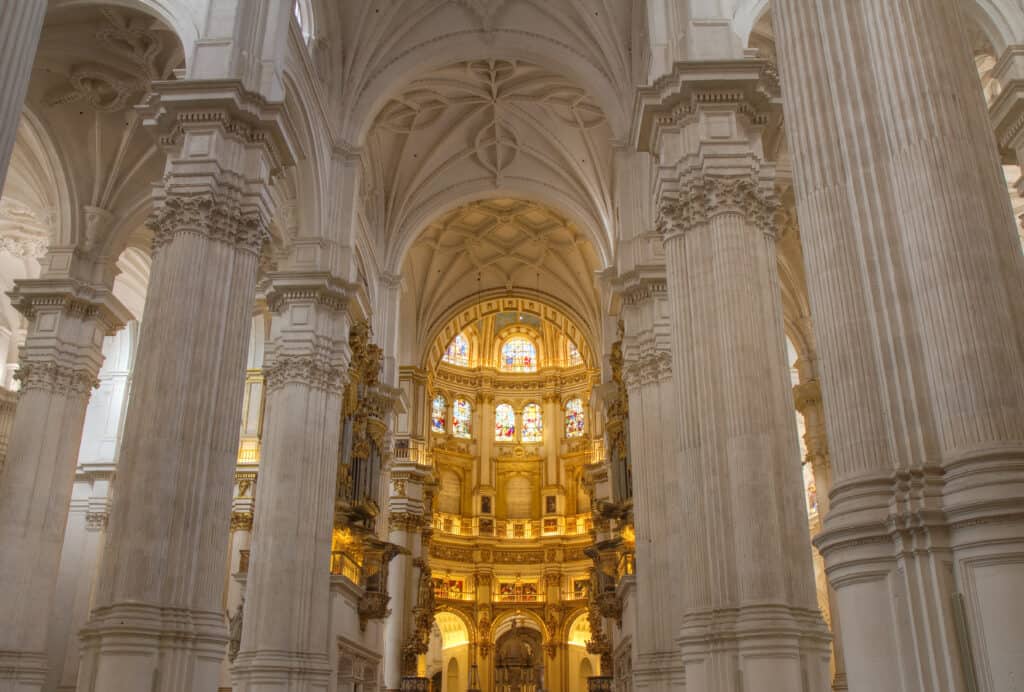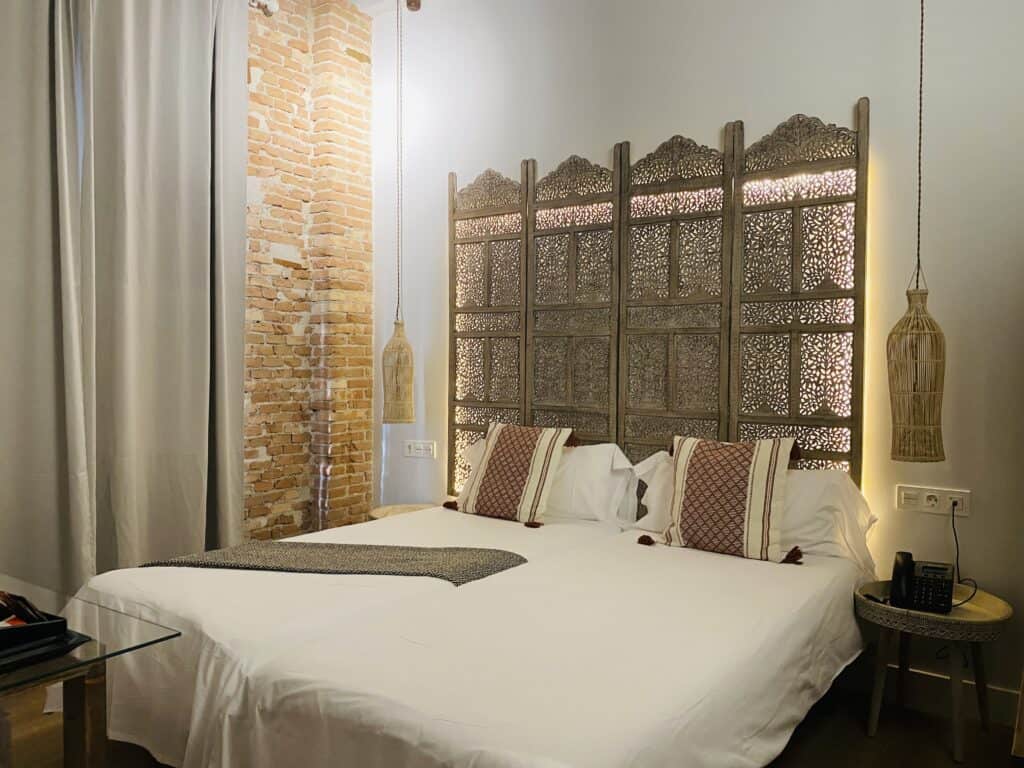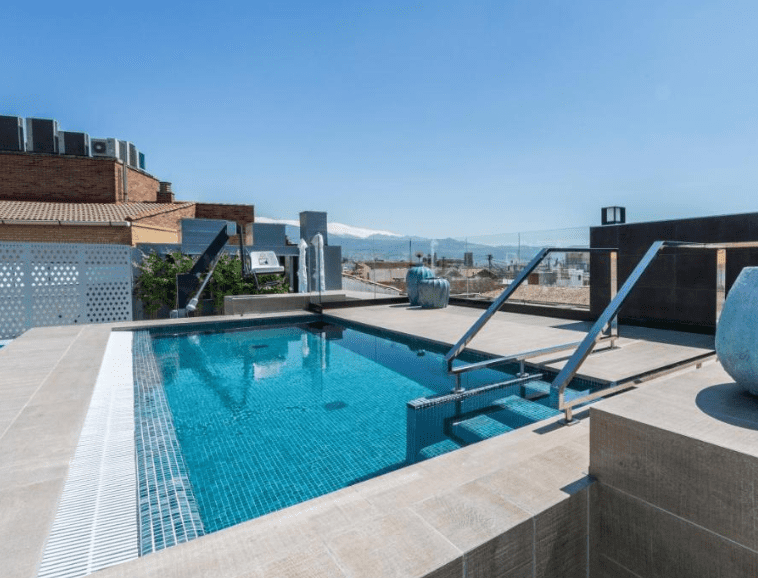How to See Granada in 2 Days | 2023


Granada, also known as the “City of Pomegranates” is a vibrant and historic city located in the southern region of Spain known as Andalucía. Situated at the foothills of the majestic Sierra Nevada mountains, Granada boasts a rich cultural heritage that dates back to the Moorish period, when the city was ruled by the Nasrid dynasty. The city’s unique blend of Islamic and Christian influences is reflected in its stunning architecture, cuisine, and traditions. Granada is perhaps best known for its iconic landmark, the Alhambra, a breathtaking palace and fortress complex that draws millions of visitors each year. With its lively streets, bustling markets, and warm Mediterranean climate, visiting Granada one of the best things to do in Andalucía. This city one of my all time favorites in Spain, and I have visited it a few times. In this post you’ll learn how to see as much of Granada in 2 Days as possible. Keep reading to learn more about this beautiful city.
Brief City History | Granada
Granada is a city with an old history, as it has been inhabited since the Bronze Age. One of the oldest names of the city that we know is Illturir, which was founded by the Iberian Bastetani tribe in the mid-600s BC. In 44 BC, what became known as Illiberis, came under Roman rule. The history of Granada is closely linked to the history of Andalucía, the southern region of Spain that was ruled by various Muslim dynasties from the 8th to the 15th centuries. During this time, Granada was the last Muslim stronghold in Spain, known as the Emirate of Granada. (Nearby Málaga fell to the Catholics several years prior).
The Emirate was a center of Islamic scholarship and culture, and its rulers commissioned many stunning works of art and architecture, such as the Alhambra and the Generalife gardens. In 1492, the Catholic Monarchs completed the Reconquista by capturing Granada, which marked the beginning of a new era in Spanish history. The conquest also led to the expulsion of Jews from Spain, as well as the forced conversion or exile of Muslims.

After the conquest, Granada underwent a period of significant transformation. Many mosques were converted into churches, and new Christian buildings were constructed. The city became a symbol of the triumph of Christianity over Islam, and it was heavily promoted by the Spanish monarchy as a site of pilgrimage and devotion. However, Granada’s Muslim past continued to exert a powerful influence on its culture and identity. The city’s architecture, food, and music all bear traces of the Islamic heritage that shaped it for so many centuries.
Today, Granada is a thriving city that combines its rich history with a vibrant contemporary culture. Visitors can explore the narrow streets of the Albaicín, the old Muslim quarter, or marvel at the intricate stucco and tilework of the Alhambra. They can also experience the city’s lively nightlife, or attend performances by flamenco dancers and musicians. Granada is a testament to the enduring legacy of the many civilizations that have left their mark on Andalusia, and it continues to inspire and captivate visitors from around the world.
Know Before You Go | Granada
Getting to Granada
Getting to Granada is a fairly easy and convenient process, as the city is well-connected by both train and air. Travelers coming from other cities in Spain or neighboring countries can take advantage of Granada’s high-speed train service, which connects the city with major destinations like Madrid, Barcelona, and Valencia. The train station is located on Avenida de Andaluces, just a short walk from the city center.
For those coming from farther away, Granada’s airport, Federico Garcia Lorca Granada-Jaen Airport, is situated just outside the city and offers regular flights to and from major cities across Europe. From the airport, travelers can take a shuttle bus or taxi into the city center. Whether arriving by train or air, visitors to Granada will be struck by the city’s beauty and charm from the moment they arrive.
On my last visit to Granada I arrived via air then left via train. I did find the train station more convenient, as it is very close to the city, but both are relatively easy transport options.
Where to Stay in Granada
When visiting Granada, I think the best location is the city centre. It is very walkable, and there are plenty of restaurants and shops close by. Here are a few of my favorite boutique hotels:
Hotel recommendation
Hotel Casa de Los Mosaicos
This adorable hotel is one of the ones that I stayed in during a visit to Granada. It is conveniently located in the city center, and features beautiful decor, comfortable bedding, and balaconies. I loved our stay here, and found the rooms to be very clean and well kept as well.
Hotel recommendation
Catalonia Granada
This hotel is another that I stayed at during a trip to Granada. It is close to the AVE Train Station and also to Plaza Nueva. It is most highly rated for it’s location and for having a very good breakfast included in the price of the room (for most rates). In addition, it comes with a rooftop pool and a very clean and modern aesthetic.
Photo Cred: Booking.com
Getting Around Granada
As I mentioned above, getting around the main areas of Granada is quite easy. It is walkable from the city center to the hilly neighborhoods of Sacromonte, Albaicin, where the Alhambra Palace is located. If you have a further distance to travel, uber is widely available, and there are taxis as well.
When to Visit Granada
The best time to visit Granada, Spain, is during the spring (March to May) and fall (September to November) seasons. During these times, the weather is generally mild and pleasant, with temperatures ranging from the mid-60s to the low 80s Fahrenheit (around 15-27 Celsius).
The summer months (June to August) can be very hot, with temperatures frequently reaching over 90 degrees Fahrenheit (32 Celsius), and the city can become crowded with tourists. Winter (December to February) can also be a good time to visit, as the city is less crowded and accommodations are often cheaper, but temperatures can be chilly, especially at night.
Language in Spain
As you know, the official language of Spain is Spanish or “Castellano” as it is called there. Outside of major cities like Barcelona and Madrid, it can be difficult to find people who speak English sometimes. I recommend brushing up on the language basics before your trip. Not sure where to start? Check out my post on the list of top Spanish phrases for travel.

get your free download!
Spanish Phrases PDF
This free download includes all the key Spanish phrases that you will need for your travels throughout Spain, Mexico and any Spanish-speaking country. In addition, get details on the best resources to improve your speaking and listening skills as well.
Currency in Spain
Like most countries in Europe, Spain uses the Euro. As of the time of writing this post, the currency exchange rate is €91 to $1.00. Please check here for the latest exchange rates. Additionally, for the Americans reading this post, I recommend taking more cash around with you than typical as it is still more commonly used that it is in the US.
Electricity in Spain
Spain uses C or E/F plugs that have rounded prongs. Also, most appliances there run on 220 volts. An electrical adapter like this one will convert most things, but I do recommend you get a dual voltage Blow Dryer if you plan to travel with one.
The Itinerary | Granada in 2 Days
Day 1
Morning
On your first day in Granada, I recommend you start by grabbing a typical Spanish breakfast. A good place to eat is in the Plaza Nueva is La Gran Taberna, where you can eat local specialities such as Pan con Tomate and Churros con Chocolate – delicious! After breakfast, spend some time getting to know some of Granada’s beautiful neighborhoods: the Sacromonte neighborhood and the Albaicin district.

Sacramonte is a unique and historic neighborhood located in Granada, Spain. This area is known for its distinct cave dwellings, which were traditionally inhabited by gypsies and other marginalized groups. Today, many of these caves have been converted into homes, restaurants, and flamenco bars, making Sacramonte a popular destination for tourists looking for an authentic cultural experience.
The neighborhood also boasts stunning views of the Alhambra palace and the surrounding countryside, as well as a number of historic landmarks such as the Sacromonte Abbey and the Museum of Sacromonte Caves. While there, you can explore the narrow streets and alleys of the neighborhood, enjoy a traditional flamenco performance, or simply relax and take in the breathtaking scenery.

The Albaicin neighborhood is located on a hillside across from the Alhambra palace. This ancient district features narrow, winding streets and traditional white houses that reflect the city’s Moorish heritage. Visitors can wander through the cobblestone streets and explore the area’s vibrant markets, shops, and restaurants, while taking in stunning views of the Alhambra and the Sierra Nevada mountains.
The neighborhood is also home to a number of important landmarks, including the Church of San Salvador, the Palace of Dar al-Horra, and the Arab Baths. The Albaicin is a UNESCO World Heritage Site and is considered one of the best-preserved examples of Islamic architecture in Spain.
The best way to see both of these neighborhoods is on a guided walking tour. This will allow this history of both neighborhoods to come to life as you explore them. Your guide will help you find places such as the Mirador de Los Carvajales and the Mirador de San Nicolas. You can also count on your guide to help you find the most picturesque photo opportunities. Check out the pictures my guide took of us while on our tour!
Book your Albaicin and Sacromonte Neighborhood Tour Now!



This tour concludes with Paseo de los Tristes, a picturesque and historic street located in the Albaicin neighborhood of Granada, Spain. Translating to “the Street of the Sad,” it was named after the funeral processions that used to pass through the area on their way to the cemetery. Today, it is a popular destination for tourists and locals alike, with stunning views of the Alhambra palace and the Sierra Nevada mountains.
The street is lined with charming restaurants and cafes that serve traditional Spanish cuisine and is a great spot to relax and soak up the atmosphere. Visitors can also explore the historic landmarks in the area, including the Iglesia del Salvador and the Casa del Chapiz, which offer a glimpse into the rich history and cultural heritage of Granada.
Afternoon
On your way back to the city center after the tour, I’d recommend a walk along the Carrera Del Darro. This historic street, runs along the Darro River. It is considered one of the most picturesque streets in the city, featuring a stunning collection of historic buildings and landmarks, including the Alhambra palace and the Puente del Carbon, a 14th-century bridge that crosses the river.
The street is also home to a variety of shops, restaurants, and cafes that offer traditional Spanish cuisine and souvenirs. Visitors can take a leisurely stroll along the Carrera del Darro to enjoy the stunning architecture and views of the river, or explore the many cultural attractions in the area, including the Museum of Fine Arts and the Church of San Pedro and San Pablo.

Evening
No visit to Granada is complete without viewing a Flamenco show. This passionate art form has its roots in the Andalusian region of southern Spain and is believed to have emerged from a blend of cultures and traditions. Namely, Gypsy, Arabic, and Jewish culture. It was considered a style of music and dance for the “outcasts” who stayed behind after the city Catholic conversion.
Over time, it evolved into a rich and complex art form characterized by intricate rhythms, emotional expressiveness, and powerful footwork. Incorporating elements of song, dance, and guitar playing, flamenco has become an important symbol of Spanish culture and is recognized around the world for its unique beauty and passion.
I’ve been to flamenco shows in two different locations here, and I’d recommend them both:
- Cueva Venta El Gallo: This larger venue has plenty of space for those who want a whole “dinner and a show” experience. It features live and local musicians who are very passionate about their performance. I loved the experience and the food here.
- Cueva Los Tarantos: This location has a very authentic “hole in the wall” feel to it. It is a smaller venue, but this just means you are pretty much guaranteed to sit close to the stage.
As you may be able to tell by the name, both are located within caves dug into the side of the hills in Albaicin. Both locations offer fantastic evening view of the Alhambra as an added bonus. plaza



Day 2
Morning
After your breakfast, start your second day in Granada visiting the Alhambra and the Nasrid Palaces. The Alhambra is a magnificent palace and fortress complex located in Granada, Spain, that was constructed during the Nasrid dynasty in the 14th century. The Nasrid Palaces are the most impressive part of the Alhambra, featuring stunning Islamic architecture and intricate decorative details, such as ornate tilework, carved stucco, and delicate filigree.
The palaces also include beautiful gardens, courtyards, and fountains that create a serene and peaceful atmosphere. The Alhambra and Nasrid Palaces are considered some of the finest examples of Islamic art and architecture in the world. One examples of this being Palacio de Dar Al-Horra, used by Aisha al-Horra, the mother to the last Nasrid sultan.



Today, Alhambra is one of the most visited tourist attractions in Spain, getting some 3 million people a year visiting the site and the Generalife. The Alhambra is a location that you simply should not do without the support of a guide. While the gardens are well maintained and continue to flourish today, the palaces themselves are empty.
For this reason, the context provided by a travel guide is invaluable. Audio guides are available, but for the best experience, I recommend touring with a real, live person. The tour I recommend is: Granada: Alhambra Ticket and Guided Tour with Nasrid Palaces. This tour includes your Alhambra tickets, so all you have to do is show up when you visit. And pro-tip, you need a copy of your passport with you for the visit.
There are few attractions as impressive as the Alhambra. And like many other points mentioned on Day 1, this is one of my favorite places for amazing views of the city.
Book your Alhambra and Nasrid Palace Tour now!

Afternoon
The Cathedral of Granada, also known as the Cathedral of the Incarnation, is a stunning example of Spanish Renaissance architecture. Built in the 16th century on the site of a former mosque, the cathedral features intricate carvings, soaring ceilings, and elaborate chapels that reflect the opulence and power of the Catholic Church during the height of the Spanish Empire.
The cathedral is also home to an impressive collection of art and artifacts, including works by famous Spanish artists such as Alonso Cano and Diego de Siloé. One of the highlights of the cathedral is the Royal Chapel, which serves as the final resting place of the Catholic Monarchs, Queen Isabella I and King Ferdinand II, who played a significant role in the history of Spain. The Cathedral of Granada is a must-visit destination for anyone interested in the history and art of Spain, and a testament to the enduring legacy of the Catholic Church in the country.

After your trip to the cathedral, consider getting some relaxation with a visit to the Hammam Al Ándalus. The hammam is an Arab bathhouse. The hammam in Granada is a bit of a more modern take on what you may find in other countries, but is a wonderful experience despite this. You can spend your time simply bathing in the warm waters or really relax while getting a massage.
Evening
Spend your final evening in Granada by grabbing a bit to eat at one of the many lovely tapas bars in the city, like Bodegas Castañeda for an authentic Andalusian dining experience.
Granada City Map
The map below shows the distance between the major landmarks mentioned in this blog post:
- La Gran Taberna
- Albaicin Neighborhood
- Sacramonte Neighborhood
- Paseo de Los Tristes
- Carrera del Darro
- Cueva Venta El Gallo
- Cueva Los Tarantos
- The Alhambra
- Cathedral of Granada
- Hammam Al Ándalus
- Bodegas Castañeda
Granada: What to Do if You have More Time
- Sierra Nevada Guided Day Trip: Take a 5+ hour hike through the gorgeous Sierra Nevada, known as the “Sister of the Alps and the Himalayas“. After exploring the natural environment, you will go to a nearby ski resort before heading back to Granada.
- Caminito Del Rey Day Trip: The Caminito del Rey is a thrilling and breathtaking path located in the province of Malaga, Andalusia, Spain. Originally constructed in 1905 as a walkway for workers at a nearby hydroelectric power plant, it was later restored and reopened to the public in 2015 as a tourist attraction. The walkway is suspended over the Gaitanes Gorge, offering stunning views of the river below and the surrounding mountains. The trail is around 7.7 km long and takes about 3-4 hours to complete. The route includes a narrow gorge, footbridges, and a glass-bottomed section, which provides an unforgettable experience for adventurous visitors. The Caminito del Rey is considered one of the most beautiful and thrilling walking routes in the world, and a must-visit destination for anyone traveling to Andalusia. However, it is important to note that the trail is not suitable for those with a fear of heights, as it involves walking at high elevations with no railings in some areas.
- Alpujarra Experience: La Alpujarra is a mountainous region located in the southern slopes of the Sierra Nevada mountain range in the province of Granada, Andalusia, Spain. The region is known for its stunning natural beauty, traditional whitewashed villages, and unique cultural heritage. This tour will take you through the botanical caves in the area as well as the local villages such as Lanjarón, Orgiva, and Trevélex, the highest village in Spain.
Final Thoughts | Granada in 2 Days
That concludes this 2-day Granada itinerary. I hope you can now see why the City of Granada in the south of Spain is such a great place to visit. I also hope that my pictures have given you a tiny taste in demonstrating why Granada is one of the most beautiful cities in the world as well. Have you been to Granada before? If so, let me know your favorite things to do in the city in the comments below.

Related Posts on Spain:
- The Best Places to Visit in Spain
- 1 Day in Málaga
- 4 Days in Barcelona
- 2 Days in Sagunto
- Historical Sites in Spain
- European Travel Guides



